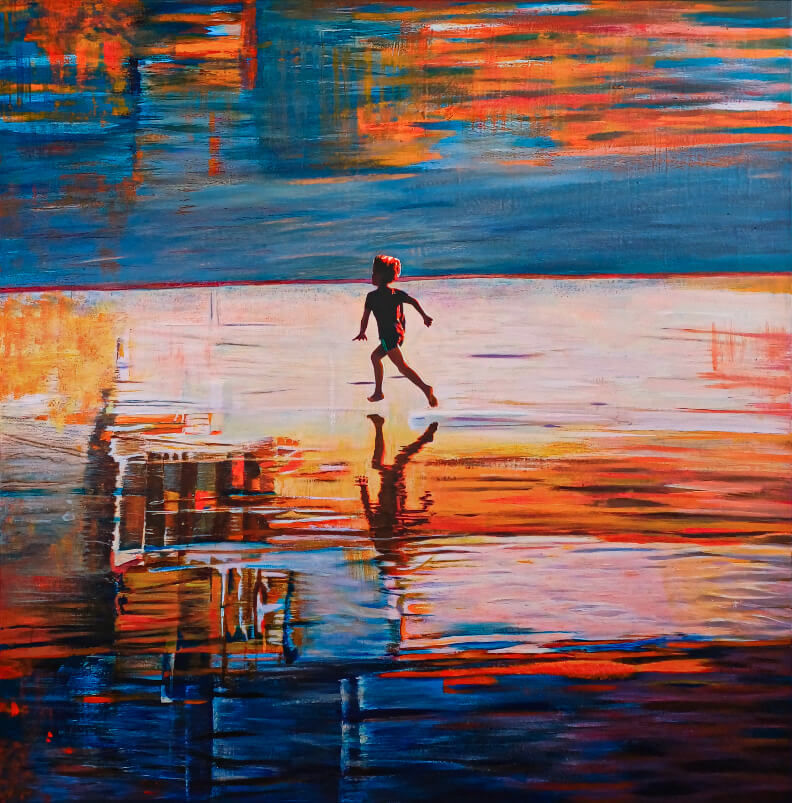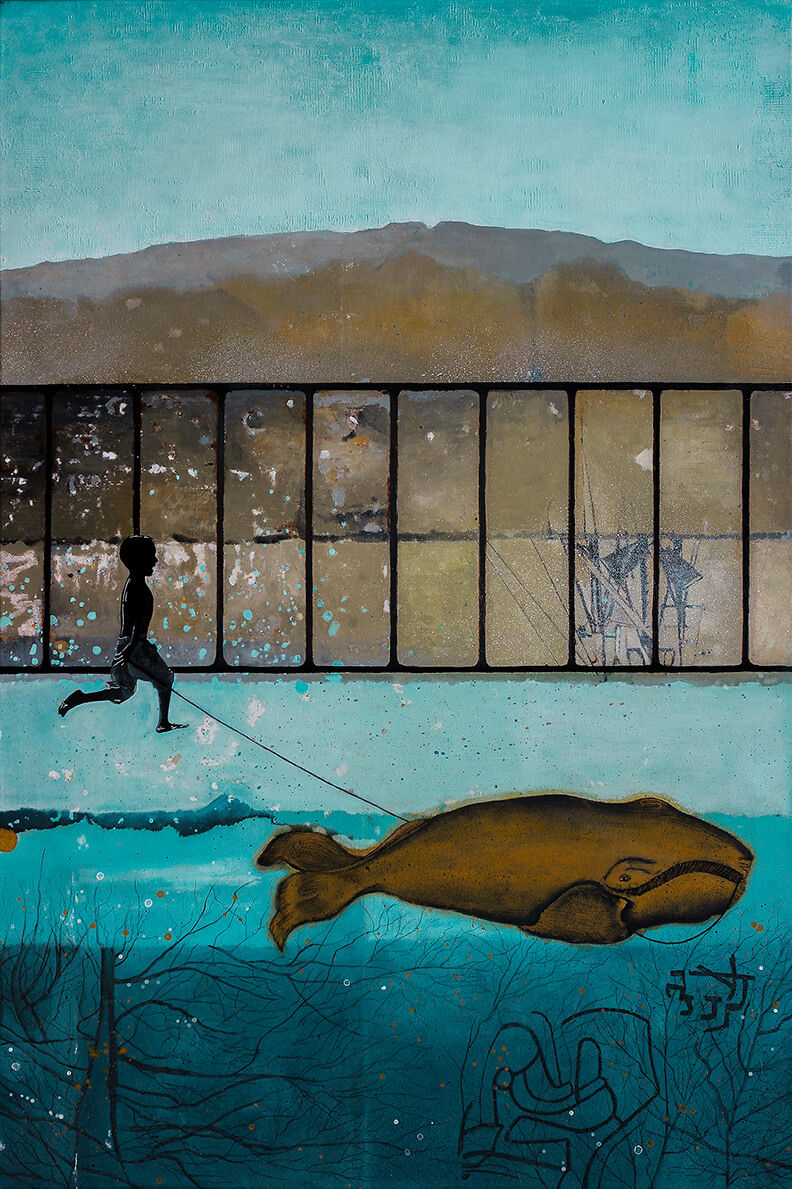The power of Silent Art- Why empty spaces in art say so much
- dbwaterman
- Jul 20
- 4 min read
Emptiness in art does not mean nothing
Many people believe that a work of art must be filled and have a clear meaning. Often with lots of bright colors.
But original silent art can be just as meaningful when there is peace and space. The power lies precisely in the emptiness and silence. Empty spaces, calm colors, room for interpretation by the viewer. These are elements that are just as important as the materials used to create the painting.
In my mixed media landscapes, I often use emptiness to evoke a feeling in people.
But the emptiness in my landscapes is never sterile. It is often abstract and constructed from weathered transfer layers of concrete-look surfaces and images of old paint residues and rust structures, which I photographed myself.
At first glance, this abstract background seems empty, but if you look longer and more closely, you see that these images actually carry a history. Weathered by time and what they have experienced.
The power of emptiness lies in the fact that it leaves something out—and thus leaves room for the viewer to fill in themselves.e
How silent art emerges in my process
My way of working brings me unexpected gifts. That is why I love this method of creating mixed media art so much.
Working with collages and image transfers mixed with acrylic paint constantly results in coincidences. Empty spaces appear where I did not expect them. Structures emerge that I could never have imagined myself.
The new images always offer new ideas. Sometimes to fill in and sometimes to leave them as I received them.
I often consciously create spaces and voids by sweeping, scratching, and polishing.
The parts that look empty and very calm are just as layered as the rest of my artworks. They are layers with scratches, scribbles, haze from toothbrush splashes, transparent layers, or shadows. These parts tell a story and evoke a feeling. They are a resting point in the painting.
The relationship between figure and space
Many of my mixed media landscapes feature people: men, women, or children. Usually alone, to immediately demand attention. Children sometimes appear in pairs.
My people are usually painted in black and white, to create a sense of calm, but in the case of the children, also to evoke an old image from the past. Like old photographs. They are rarely portraits, often universal and symbolic of a person's inner state.
The space around them makes them stand out immediately and seem extra vulnerable.
The empty landscapes reinforce the feeling of loneliness.
The image gains extra expressiveness because the figure seems almost lost in the landscape.
I create these compositions very consciously, because the relationship between humans and the weathered, vast empty landscape is about feeling. The viewer can empathize with the feelings of the figure.
Textures as silent storytellers
The empty areas of my mixed media paintings are never truly unfinished or truly empty. They are, in fact, rich in texture. Or full of small structures.
Take, for example, an old concrete wall. At first glance, the surface seems empty and meaningless. But a long, old story lies hidden within such a weathered concrete wall. There are cracks, peeling layers of old paint, moisture stains, moss, and sometimes remnants of graffiti and tags. In short, such a wall has been through a lot.
For me, these kinds of surfaces are a feast for the eyes. And I try to recreate them in my artwork.
Sometimes by literally copying them, using techniques also used in the creation of a real concrete wall. Then, layers of acrylic paint with heavy gel, old layers of collage paper, and transparent paintings are added. I polish and sand away sections again. Just as I do with a concrete wall outdoors. The result is weathered art that looks as if it has lived. Art with a story
These textures function as layers of memory. You can see through the layers and see what once lay beneath.
You don't see direct scenes, but traces of what was there.. These imperfect layers are not decorations—they are the story.
The power of omission in silent art
Mixed media landscapes, where not every space is filled, offer peace and space to reflect and create your own meaning.
Especially in a world where we are inundated with fast-moving images and information, everywhere and constantly, emptiness and space offer a counterbalance.
It's often more difficult to omit things. It requires courage and conviction.
But in my view, it makes an image stronger and more meaningful. Visually, but also emotionally.
Emptiness also demands something of the viewer: to feel, to allow, to remember, to reflect, and perhaps to further flesh out the story.
An ode to the imperfect landscape
By the way I depict my landscapes, using weathered walls, concrete textures, or rusty surfaces as a backdrop, I don't create perfect images.
Not green meadows and blue skies, but dry deserts, quiet, misty swamps, or dark forests. Imperfect landscapes created by the use of raw and weathered materials.
For me, that's precisely where the beauty lies.
That beauty in imperfection—a principle that strongly aligns with wabi-sabi (see blog 3)—is the core of my work. Old layers, damaged surfaces, transience: they are not flaws, but qualities. And the emptiness between these elements? It is like breath between sentences. Essential.
In summary: emptiness as a meaningful choice
Emptiness in my art is never arbitrary. It is a thoughtful choice within a process that is largely intuitive. The use of textures, old layers, peeling paint, and a concrete look amplifies that emptiness—and makes it palpable. In that space, the viewer can encounter themselves, or even disappear for a moment.
My work is imperfect. And that's precisely why it's so moving. The power of emptiness lies in what isn't there—but what you feel nonetheless.
Are you curious to see how these themes come to life in my work?
Please contact me if you have any questions. I can help you choose or create a piece of art that fits your interior!
You are always welcome to visit my studio gallery at Strijp-S in Eindhoven, or take a look at my online portfolio.




















